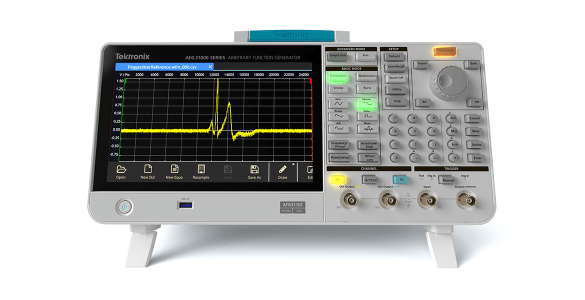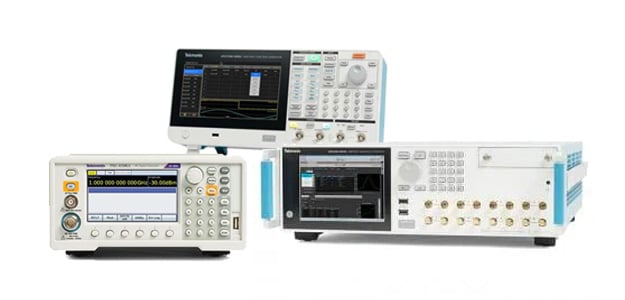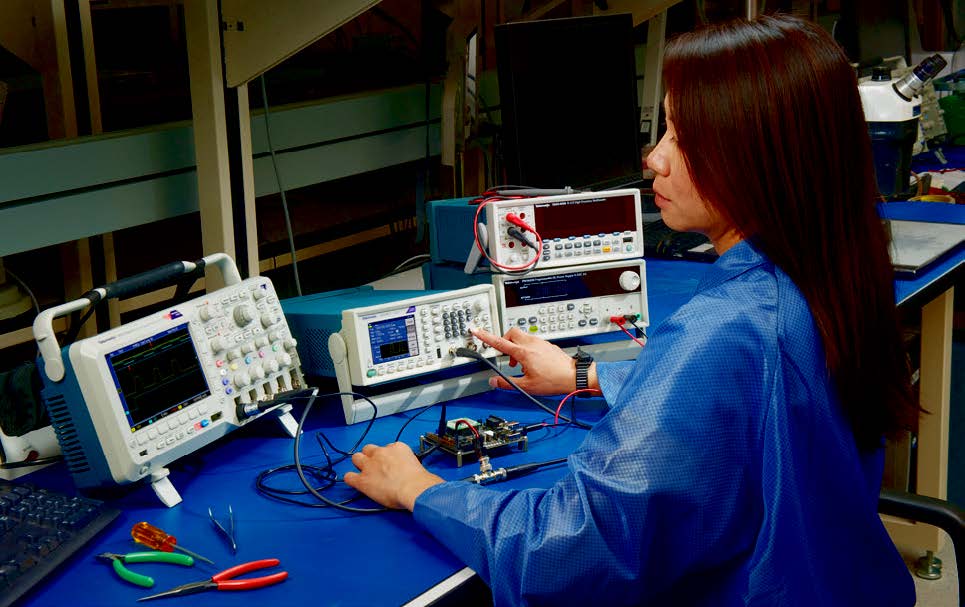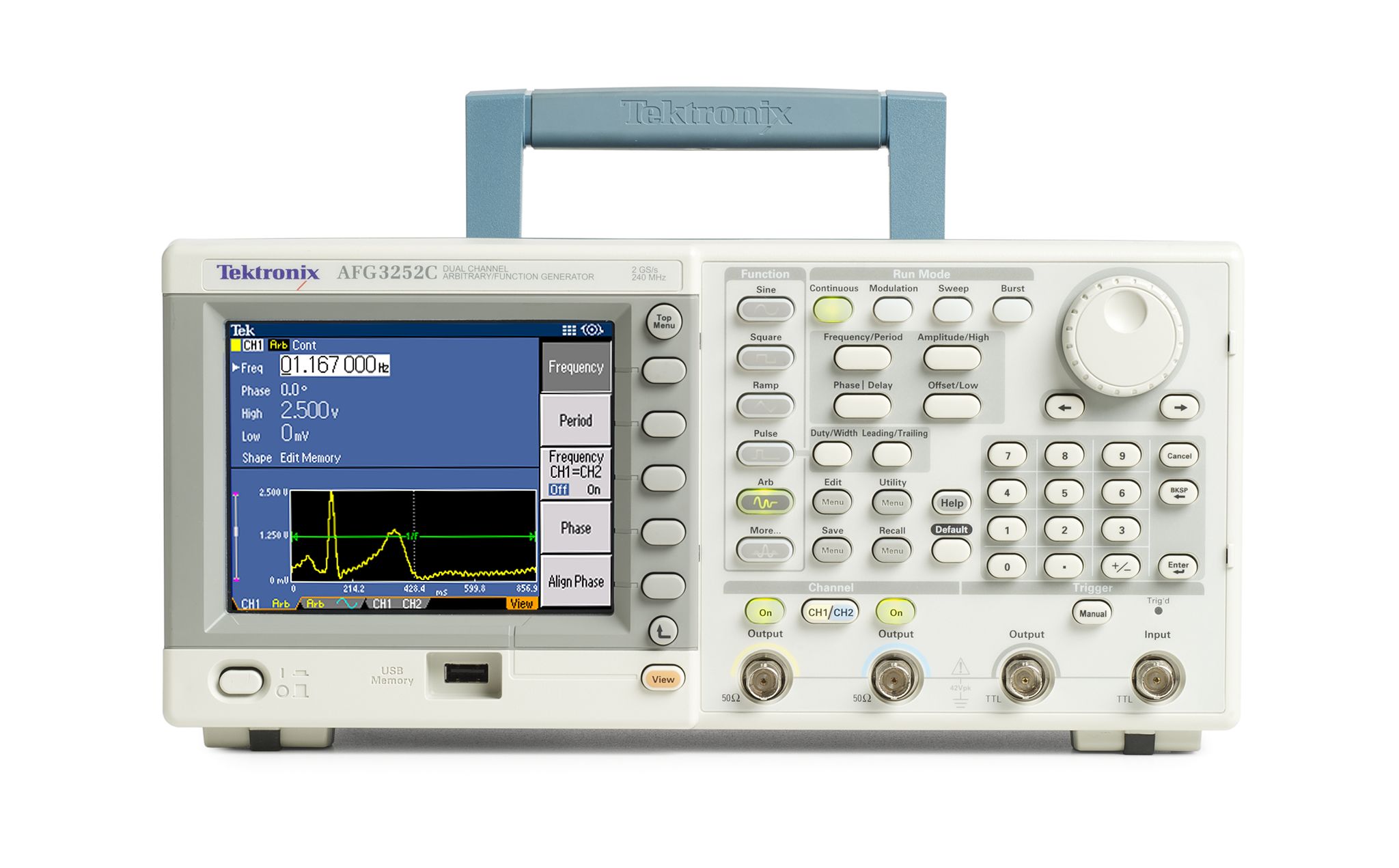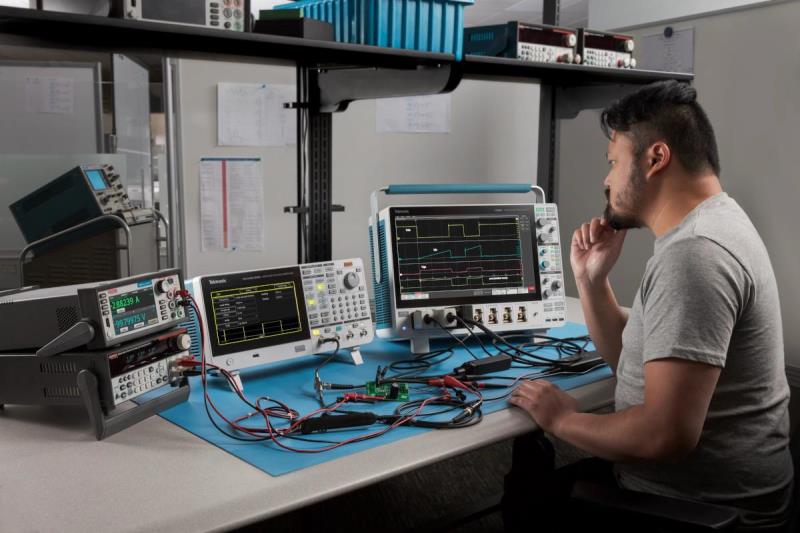
お問い合わせ
ダウンロード
マニュアル、データシート、ソフトウェアなどのダウンロード:
フィードバック
ファンクション・ジェネレータ
今日の設計は複雑なものが多く、試験中にさまざまな入力信号が要求されます。テクトロニクスのファンクション・ジェネレータは、妥協のない周波数アジリティを提供し、信号を常に正確に再現する最高クラスの機器です。
テクトロニクスのファンクションジェネレータは、標準波形、任意波形機能、信号障害オプションがあらかじめ搭載されており、幅広いアプリケーションをサポートするとともに、任意波形発生器の高度な機能を必要としないアプリケーションには経済的なソリューションを提供します。
関連セクション
ファンクション・ジェネレータの比較
| 製品の比較 | 型名 | アナログ・チャンネル数 | サンプル・レート | 周波数帯域 | 垂直軸分解能 | レコード長(ポイント) | 出力周波数レンジ | 価格 |
|---|---|---|---|---|---|---|---|---|
|
|
1または2 |
250MS/s~2GS/s |
25 MHz~250MHz |
14ビット |
16Mポイント/ch |
25 MHz~250MHz |
US $3,200
|
|
|
|
2 |
125 MS/s - 300 MS/s |
25 MHz - 60 MHz |
14-bit |
8k points - 1M points |
25 MHz - 60 MHz |
US $1,290
|
|
|
|
1 |
250MS/s |
20MHz |
14ビット |
128 kポイント |
20MHz |
ファンクション・ジェネレータの選び方
ファンクション・ジェネレータを選ぶ際の、最も重要なポイントをご紹介します。
| 項目 | 概要 |
|---|---|
| サンプル・レート | メイン出力信号の周波数と忠実度に影響します。正確な信号再生のためには、生成された信号の最も高いスペクトル周波数成分の2倍以上のサンプリング周波数が必要です。 |
| 周波数帯域 | 信号発生器の出力回路のアナログ帯域幅は、そのサンプル・レートがサポートする最大周波数を処理するのに十分でなければなりません。言い換えれば、信号特性を劣化させることなく、メモリからクロック出力される最高周波数と遷移時間をパスするのに十分な帯域幅が必要です。 |
| レコード長 | レコード長は保存できる最大サンプル数を決めるもので、波形を定義するために何ポイントのデータを保存できるかを決定するため、信号の忠実度に重要な役割を果たします。特に複雑な波形の場合、信号の詳細を正確に再現するためには、レコード長が重要になります。 |
| 出力周波数レンジ | 最も重要な項目の1つであり、多くの場合、価格の最大の要因となるのが出力周波数レンジです。測定に適した出力周波数レンジで動作するファンクション・ジェネレータを選ぶことが重要です。 |
| ノイズとジッタ | この2つの特性は非常に密接な関係にあり、本質的には信号の望ましくない歪みであり、できる限り抑えられるべきものです。 |
| チャンネル数 | アプリケーションのニーズによっては、出力は1つで十分な場合もあります。しかし、例えばIQ変調の場合は、2つの出力が必須となります。 |
| ユーザ・インタフェース | 応答性の高い大型の最新型タッチスクリーンは、測定時間が不可欠なラボにとって重要な要素です。 |
ファンクション・ジェネレータ関連資料
ファンクション・ジェネレータに関するよくある質問
ファンクション・ジェネレータとは?
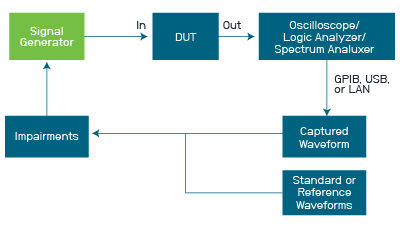
ファンクション・ジェネレータとは、標準的な波形(一般的には正弦波と方形波)を生成し、電圧信号として出力できる試験装置です。設計のテストや、電子機器が意図したとおりに動作しているかどうかの確認に使用されます。
ファンクション・ジェネレータと信号発生器の違いは?
信号発生器は、電子信号を発生させる装置です。ベクトル信号発生器は、QAM、QPSK、FSK、BPSK、OFDMなどの、アナログ/デジタル変調方式のRF信号の生成に特化された装置です。
ファンクション・ジェネレータは、再生可能な波形やパターンがプリセットされている特殊な試験装置です。ファンクション・ジェネレータは、ある周波数から別の周波数に素早く切り替えることができ、他の高度な波形発生器よりも低価格の選択肢と言えます。
ファンクション・ジェネレータの使い方は?
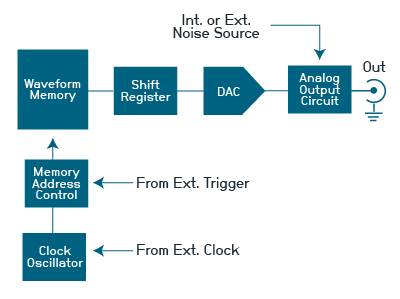
ファンクション・ジェネレータは、テストリード線を介して被測定物(DUT)に接続し、DUTに対して任意の周波数の電圧波形を生成します。測定器の前面パネルを使用して、オペレータは波形のパラメータ(周波数、振幅、オフセットなど)を変更したり、基本的な歪みや変調を加えたりすることができます。
ファンクション・ジェネレータと任意波形ジェネレータ(AWG)の違いは?
ファンクション・ジェネレータは、主に正弦波、方形波、三角波などの標準波形を生成しますが、任意波形ジェネレータ(AWG)なら、ユーザーによる入力に基づいて、より複雑でカスタマイズされた波形を作成できます。AWGは、高速信号テストなどの高度な用途によく使用されます。
ファンクション・ジェネレータが生成できる波形の種類は?
ファンクション・ジェネレータは、AC回路テスト用の正弦波、デジタル信号テスト用の矩形波、波形解析用の三角波、カスタム信号生成用の任意波形など、幅広い波形を生成できます。
複数のファンクション・ジェネレータを同期させることはできますか?
はい、多くのファンクション・ジェネレータでは、外部トリガや同期入力/出力など、さまざまな方法で同期が可能です。これは、複雑な波形やマルチチャンネル設定を生成する場合に特に便利です。


